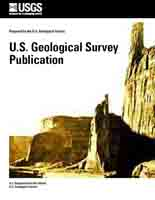In 2004, the U.S. Geological Survey (USGS) and the National Park Service (NPS) initiated a reconnaissance study of alluvial bars along the Obed Wild and Scenic River (Obed WSR), in Cumberland and Morgan Counties, Tennessee. The study was partly driven by concern that trapping of sand by upstream impoundments might threaten rare, threatened, or endangered plant habitat by reducing the supply of sediment to the alluvial bars. The objectives of the study were to: (1) develop a preliminary understanding of the distribution, morphology, composition, stability, and vegetation structure of alluvial bars along the Obed WSR, and (2) determine whether evidence of human alteration of sediment dynamics in the Obed WSR warrants further, more detailed examination.
This report presents the results of the reconnaissance study of alluvial bars along the Obed River, Clear Creek, and Daddys Creek in the Obed WSR. The report is based on: (1) field-reconnaissance visits by boat to 56 alluvial bars along selected reaches of the Obed River and Clear Creek; (2) analysis of aerial photographs, topographic and geologic maps, and other geographic data to assess the distribution of alluvial bars in the Obed WSR; (3) surveys of topography, surface particle size, vegetation structure, and ground cover on three selected alluvial bars; and (4) analysis of hydrologic records.


